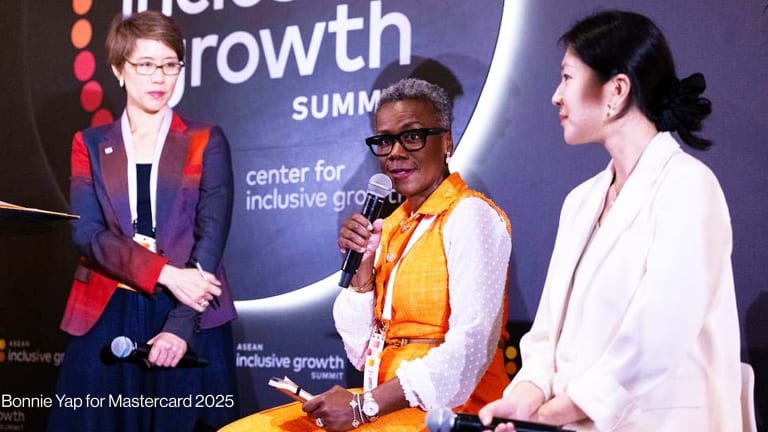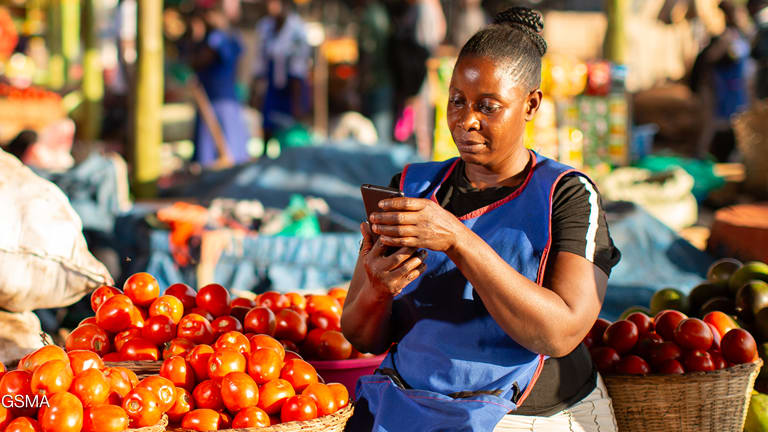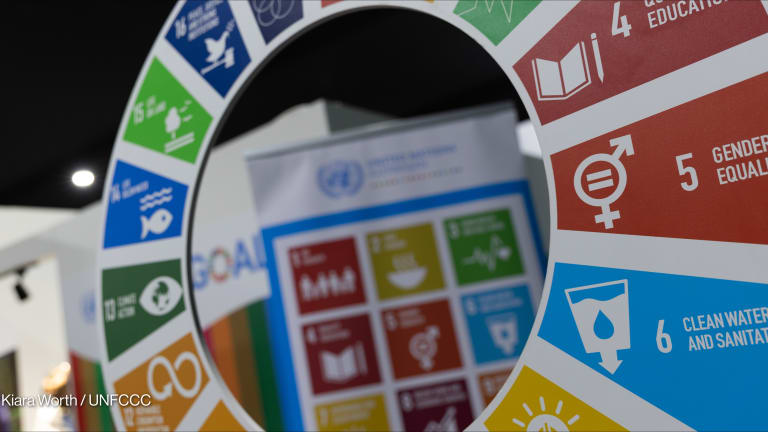
In 2011, the World Bank, with the support of the Bill & Melinda Gates Foundation, began to release the Global Findex database, which provides data every three years on the banking habits of individuals in over 140 countries. Findex has shown a marked increase in financial inclusion since data collection began, with 515 million people worldwide having obtained a bank account since 2014. According to the data, 63 percent of people in developing countries have access to financial services either through a traditional bank account or a mobile money provider.
The dataset has also revealed a major and stagnating gender gap in financial inclusion. Globally, women are on average seven percentage points less likely to hold a bank account than men, and nine percentage points less likely in developing countries. That number rises to 40 percentage points in certain countries.
“Because banks don’t have this data, they don’t realize what they’re missing. They don't realize that they are not serving the women's market and that their proportion of clients who are women is comparatively small.”
— Mayra Buvinic, senior fellow, Data2XFindex was a game-changer in the way development actors tackle women’s financial inclusion, said Gabriela Andrade, financial markets lead specialist at the Inter-American Development Bank.
“Finally we had metrics that showed us that throughout the world there were gender gaps in financial services.”
Challenges to data collection
Findex data is extremely valuable but is only one type of gender data input needed to understand access to financial services. To really understand where and why gender gaps exist, both demand-side data — which details the actual banking needs of the population and whether those are matched with existing services — and supply-side data — information on existing services offered by financial service providers — are needed for policymakers and financial service providers to take action on expanding women’s financial inclusion.
A joint report released in 2015 by Data2X, the Global Banking Alliance for Women and IADB noted a lack of reliable and comparable datasets that could help policymakers address gender gaps. This lack of gender data is most evident on the supply side.
The report cites several barriers to data collection. Among them is a lack of awareness of the value of sex-disaggregated data and a lack of distribution and use of available data — most banks around the world do not collect sex-disaggregated data, according to Mayra Buvinic, senior fellow at Data2X, a technical and advocacy platform whose mission is to improving the quality, availability, and use of gender data.
Also at stake is the cost of setting up new systems for data capture, which governments should bear in mind when demanding data from financial institutions, explained Rebecca Ruf, vice president of programs at the Global Banking Alliance for Women, a consortium of financial institutions that supports its members in serving the women’s market.
“You have to balance, first of all not overburdening the banks and asking for too much information, while at the same encouraging the right kind of information that will actually motivate them to really do something and understand their gaps,” Ruf said. “It's always important to think about the use before you even think about the data.”
Data helping to close financial inclusion gaps
In 2006, Chile’s state-owned commercial bank, BancoEstado, launched CuentaRUT, a basic account that’s offered to anyone with a national identification number with no associated banking fees.
Previously, Chilean bank accounts were tied to certain requirements in terms of level of income, came with fees that were prohibitive for many, and kept a large portion of the population unbanked. The Chilean government also decided to use CuentaRUT to disburse social benefits commonly known as cash transfers as an incentive for its recipients — many of whom were women — to enter the formal banking sector.
The impact of CuentaRUT was felt almost immediately. The number of deposit accounts held by women grew by 73 percent in 2006 and increased by an average of 22 percent in the following years. In 2017, 46 percent of debit cards in Chile were linked to CuentaRUT accounts and over half of account holders were women.
Following the success of CuentaRUT, private banks launched their own simplified accounts, and BancoEstado went on to diversify its product offering for women.
“[BancoEstado] completely closed the gap between men and women thanks to their account and they were able to see that through their data,” said Ruf.
Chile’s progress toward improving women’s financial inclusion didn’t happen in a vacuum. BancoEstado’s new programs — as well as a range of other initiatives spearheaded by the government — were informed by a vast amount of data that has enabled the country to identify gender gaps, gather insights on unbanked women, design effective solutions accordingly, and track their progress over time.
Indeed, Chile is the only country in the world that has consistently collected supply-side sex-disaggregated data on financial services for close to two decades — an effort that was initiated in 2002 by the government as part of gender equality mandates and performance-based budgeting efforts and implemented by the Chilean financial systems regulator.
Today, Chile serves as an example of how data can have a direct impact on women’s financial inclusion.
“Because banks don’t have this data, they don’t realize what they’re missing. They don't realize that they are not serving the women's market and that their proportion of clients who are women is comparatively small,” Buvinic said.
Missed opportunities
Estimates show that two-thirds of banks do not target women as a separate customer group, even though women tend to manage their money differently than men. For instance, they have been shown to be more reliable when it comes to repaying small loans and credit, Buvinic said. But female-owned micro-, small- and medium-sized enterprises in emerging markets are underfinanced by $1.7 trillion, representing over 6 percent of total gross domestic product, according to International Finance Corporation data.
Women are also more interested in saving and in breaking down their savings into goals like children’s education, health emergencies, or starting a business. “It really helps women save when they can save for certain purposes,” Buvinic said. “One unanticipated consequence is that to be able to save privately for a certain goal, empowers them.”
Beyond products and services
The Global Banking Alliance for Women helps its members serve the women’s market through research, advocacy, and capacity building. Over time, the organization has developed a blueprint to demonstrate how attending to women’s distinctive needs brings profits down the line, Ruf explained.
“Our approach is really starting with the business case … [It] can really make the case internally as to why this is a good business proposition,” she explained.
In the Dominican Republic, GBA worked with its member Banco BHD León to generate better demand-side information through interviews and focus groups, among other research activities. Insights revealed that women’s core priorities, such as family or personal well-being, as well as their need to be consulted and educated about financial products, weren’t being addressed by the bank.
This led Banco BHD León to completely redesign its product offering for women. It created bundles of services that include credit, savings, and insurance products, all addressing the core priorities that emerged from the research, such as family or personal well-being. It included nonfinancial services to its bundles, such as courses and workshops for female business owners, and information on client benefits for individuals.
The bank also trained its employees to adopt a more consultative and solutions-based approach to selling financial products, thus increasing trust among female clients, Ruf said.
“Women require a different approach than [banks] might be used to. Obviously, financial services [are] at the core of what banks do, but women tend to also need a number of other things, which we call nonfinancial services. That includes information, education, opportunities to network, as well as recognition,” Ruf explained.
“It is this combination of things that we see really work in making sure that women are included in the financial system.”
Data-informed policymaking
Governments also need sex-disaggregated financial data to inform policymaking. As part of its National Policy for Financial Inclusion, launched in 2016, Mexico has begun digitizing its social benefits program Prospera, thereby giving an incentive to the program’s recipients — 98 percent of whom are women — to open a bank account in order to receive the funds.
As a result, the share of women with accounts went from 30 percent in 2012, to 42 percent in 2015, Andrade said. Now, the government is rolling out a mobile banking service so that women can retain these social benefits in electronic form as long as possible, rather than cashing them out right away.
“We saw the evolution of this data, we saw the impact of these policies [reflected] in the data,” Andrade said. “This showed that the policies worked. They included women. They closed gaps.”
Mexico’s national policy has been heavily driven by data collection. IDB supported the government in generating supply-side data, notably regarding women-owned SMEs. Meanwhile, the government conducted a thorough national demand-side survey that has yielded granular data on financial inclusion, for instance by revealing disparities at the regional level.
To ensure that gender data can truly be impactful, governments must demonstrate a real commitment to follow through on data collection, Ruf said.
“A lot of the time, there's the challenge of data for the sake of data,” she warned. “The countries that are doing this and are really committed have a champion. In the case of Chile, it was coming from [then-President Michelle Bachelet]. Having that is a game changer.”








